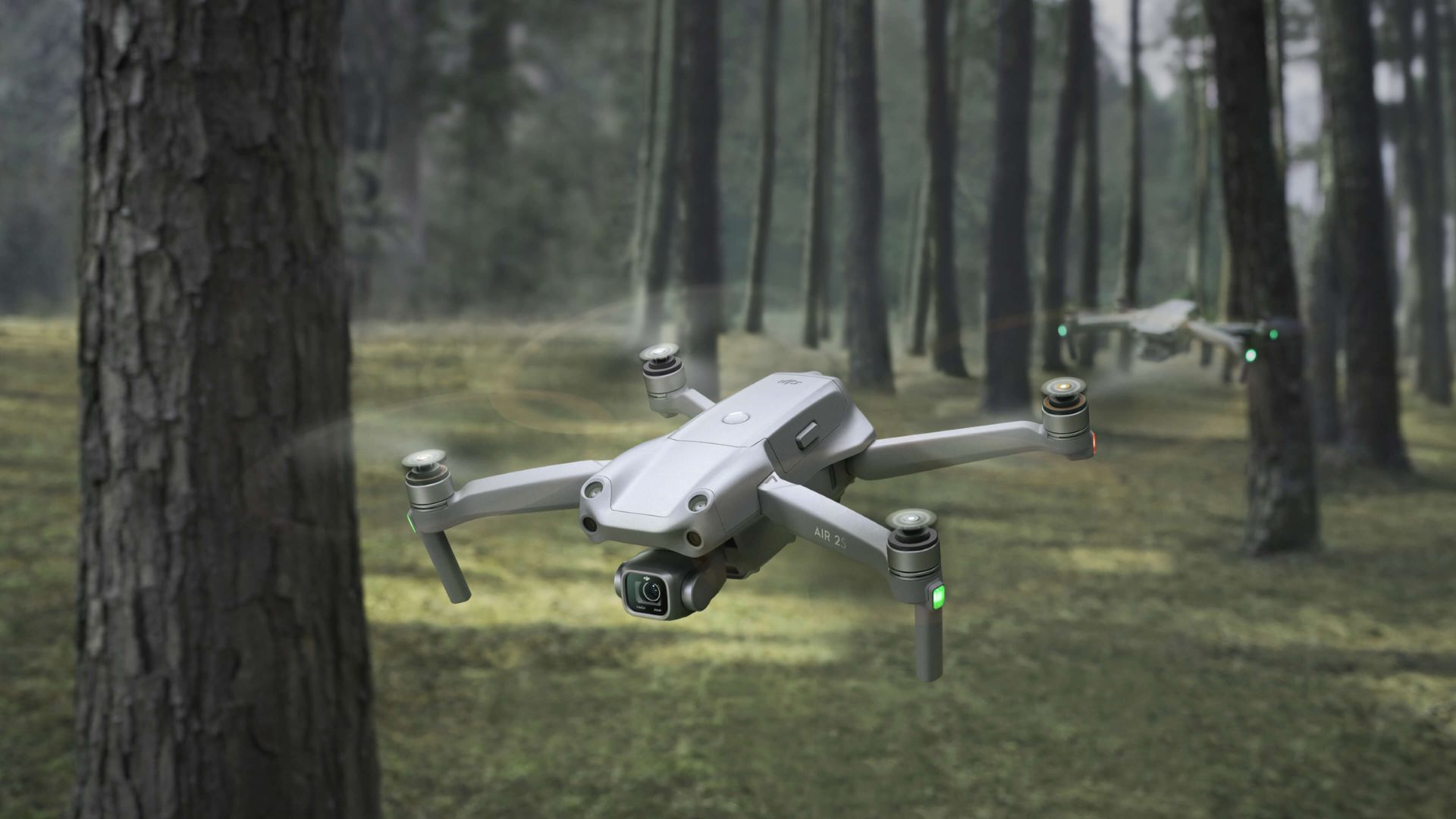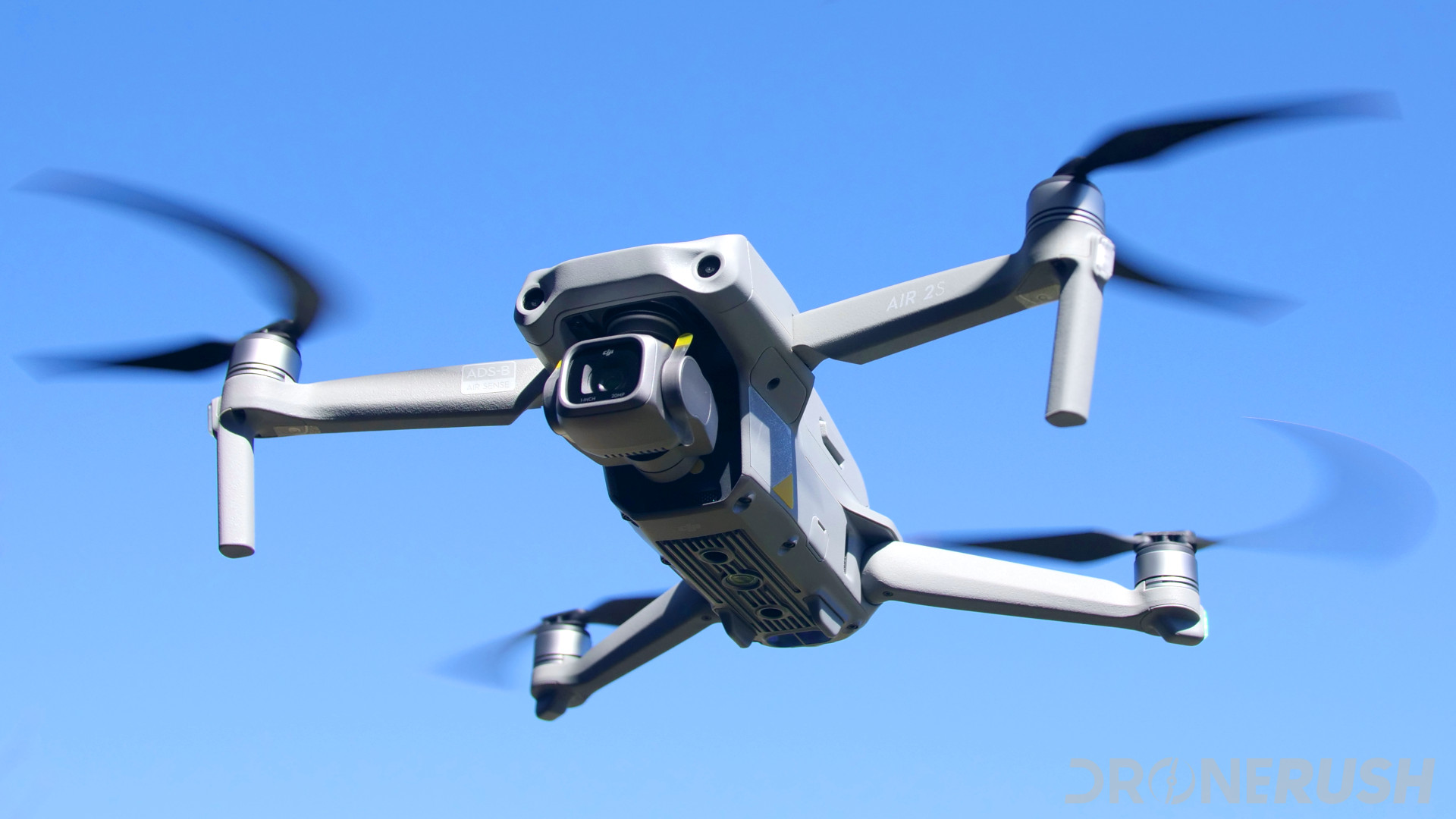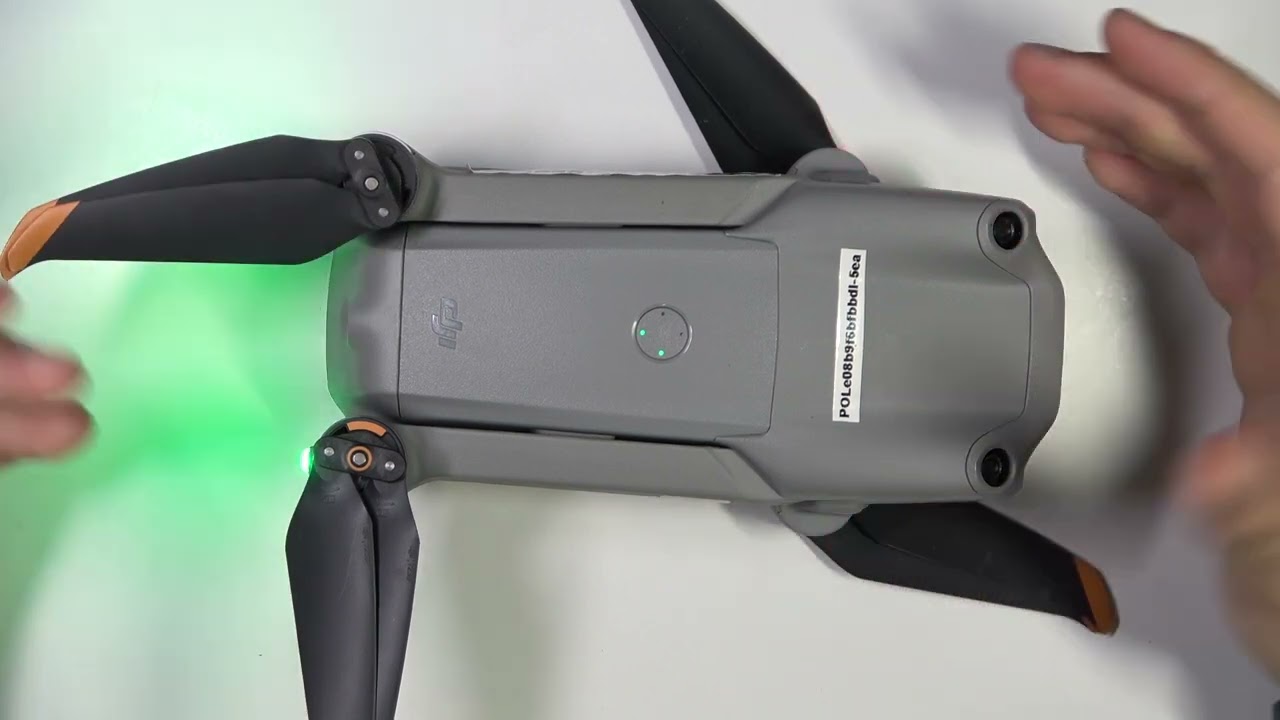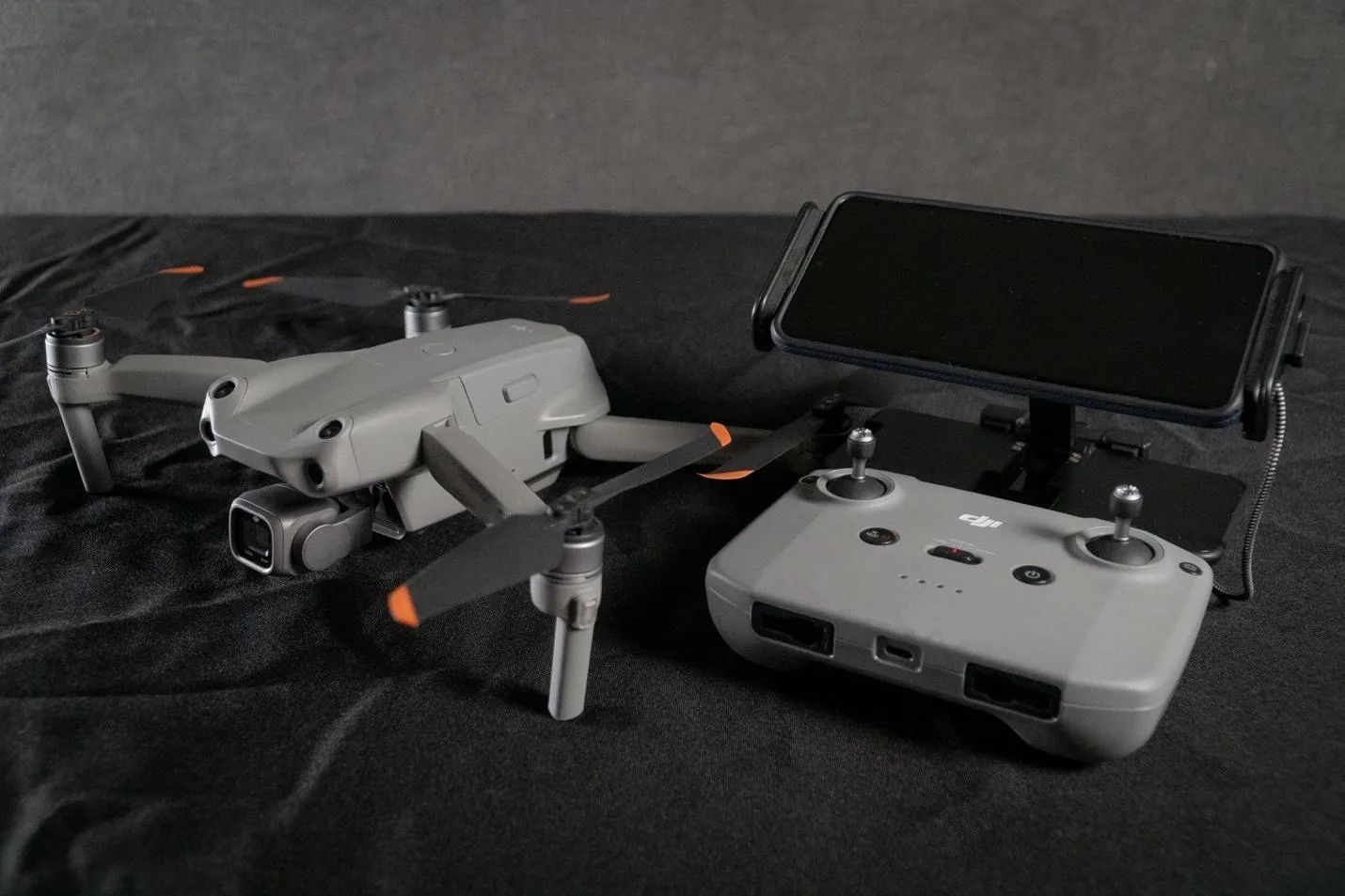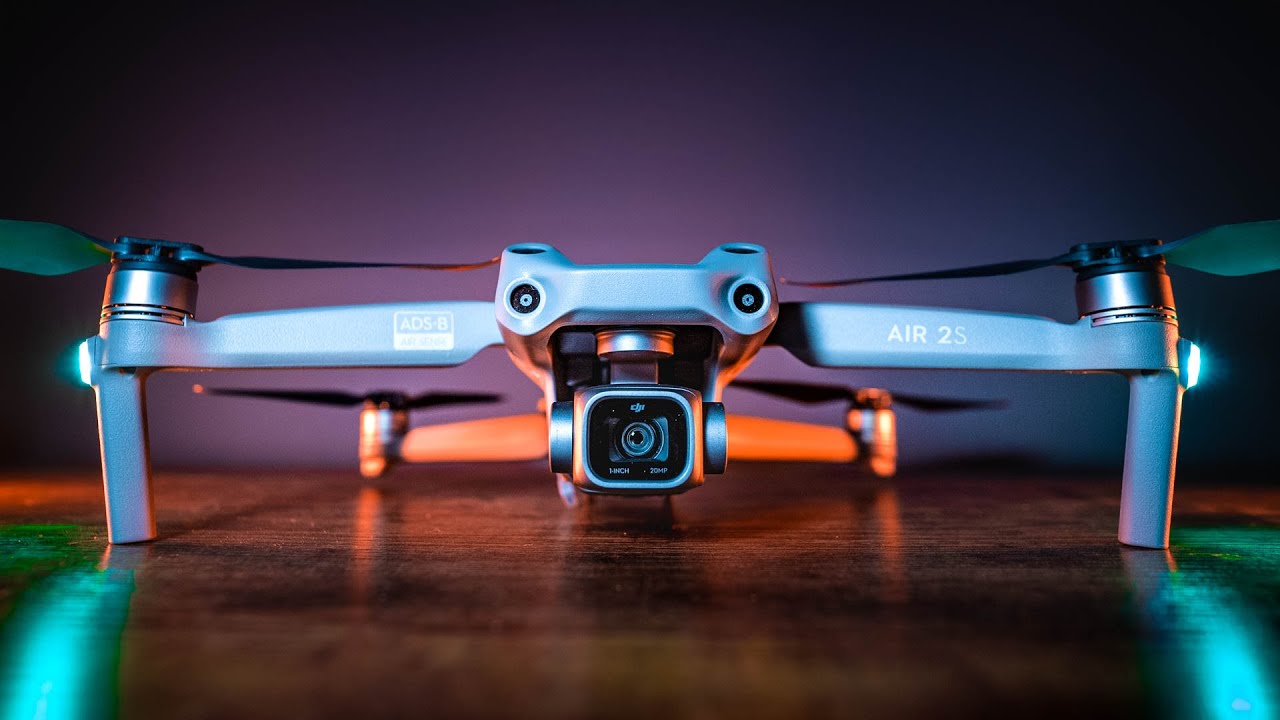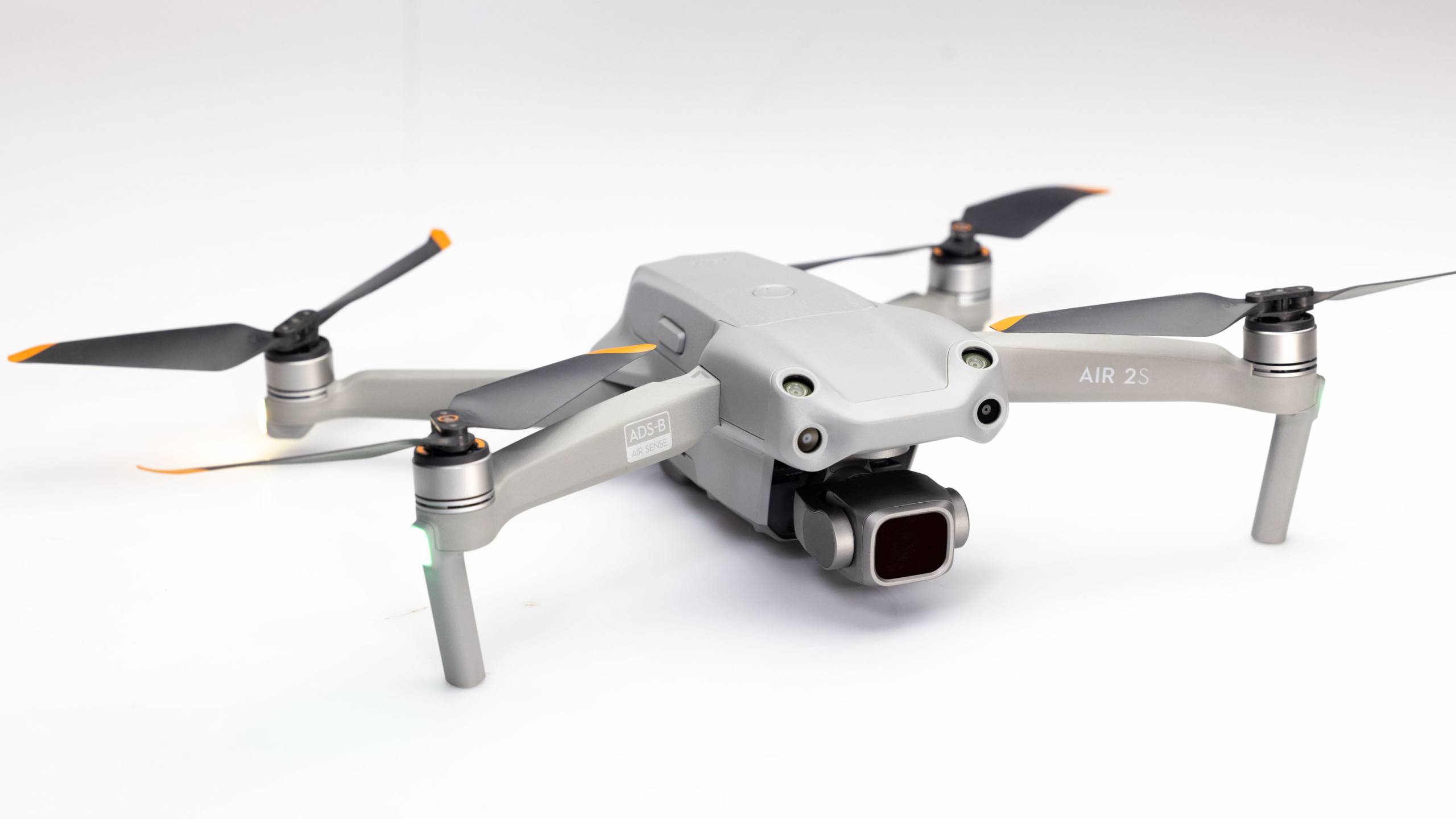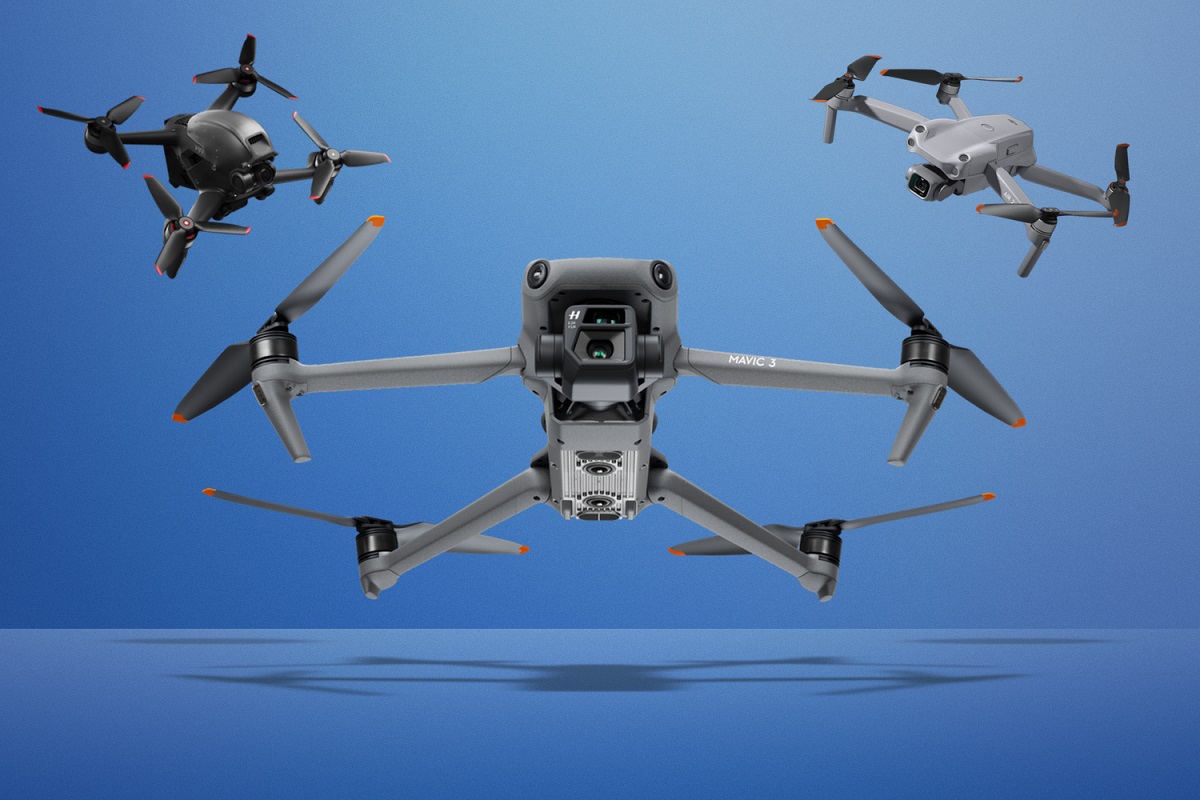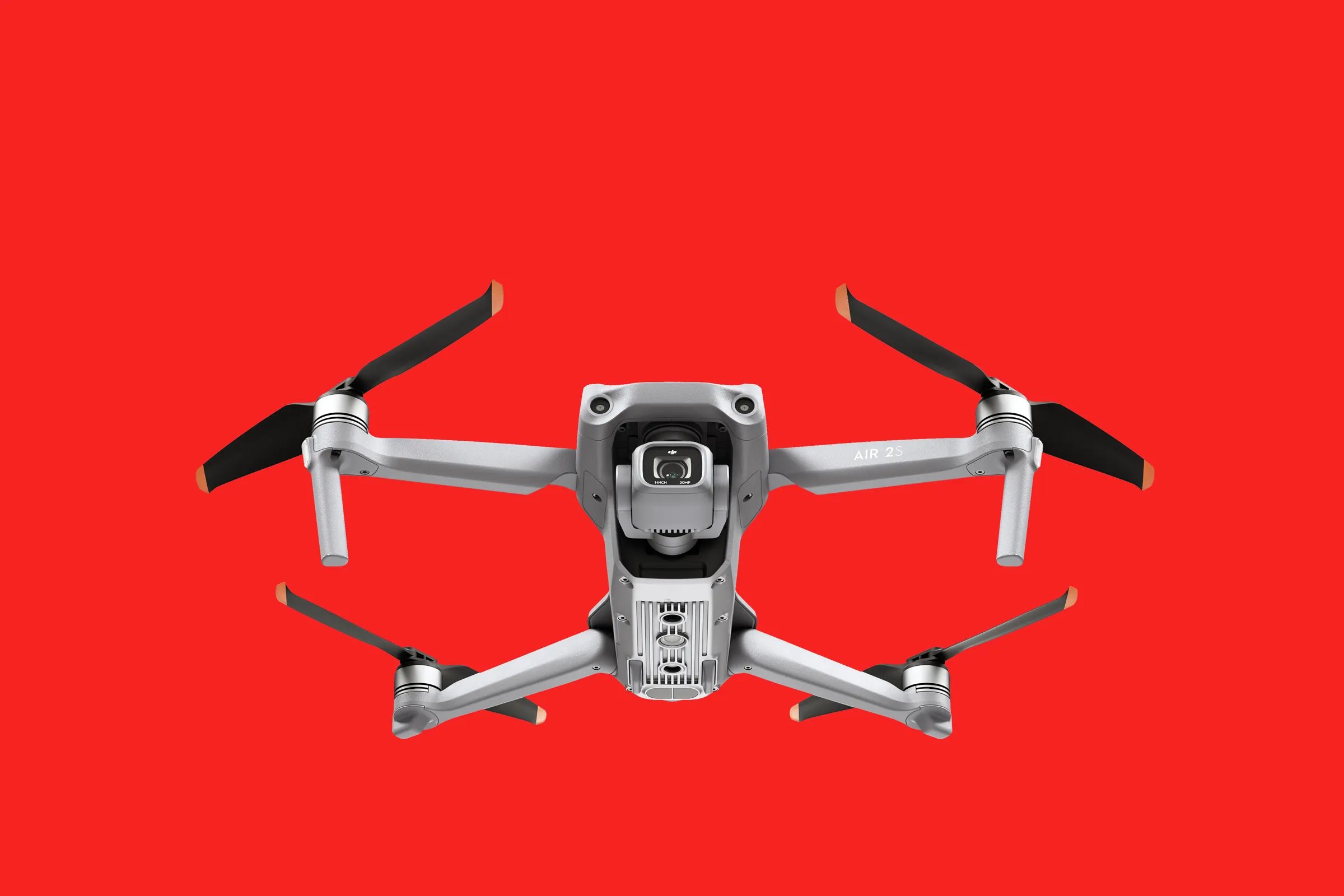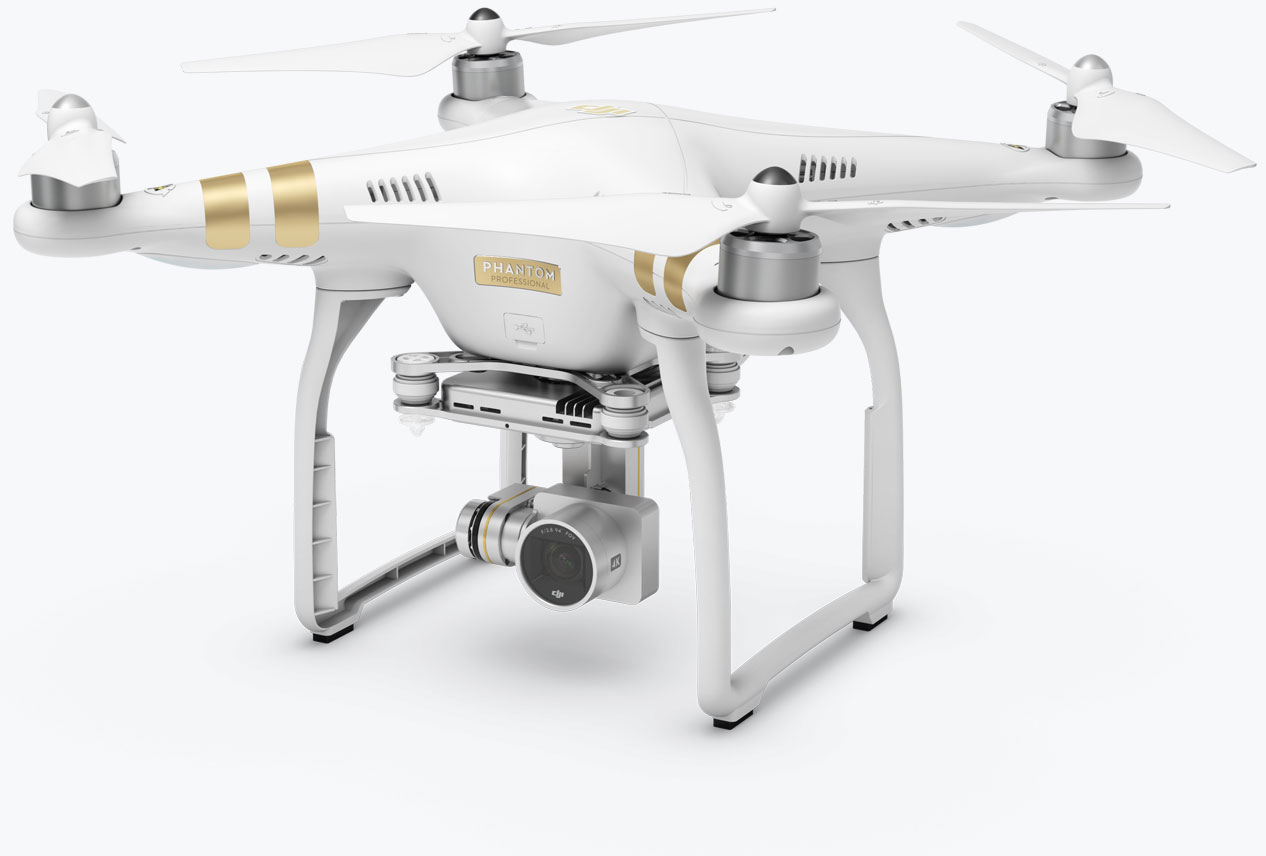Introduction
Welcome to the exciting world of aerial photography and videography with the DJI Air 2S drone! With its advanced features and capabilities, the DJI Air 2S has quickly become a popular choice among drone enthusiasts and professionals alike. One key aspect that all drone users are curious about is the flight range of their equipment. In this article, we will explore the flight range of the DJI Air 2S and the various factors that can affect its performance.
The DJI Air 2S is a compact and powerful drone that offers an impressive flight range, allowing you to capture stunning aerial footage from greater distances. It boasts a maximum flight range of up to 12 kilometers (7.5 miles) in ideal conditions. However, it is important to note that the actual flight range may vary depending on several factors that we will discuss in this article.
Understanding the flight range of the DJI Air 2S is essential for planning your aerial photography or videography sessions. Whether you are a beginner or an experienced drone pilot, being aware of the factors that can impact the drone’s range will help you make the most of your flying experience.
So, let’s dive into the world of DJI Air 2S flight range and explore the factors that play a crucial role in determining how far this drone can fly.
Understanding DJI Air 2S Range
The range of the DJI Air 2S refers to the maximum distance it can fly away from the remote controller and still maintain a stable connection. This is an essential consideration for drone pilots who want to explore larger areas or capture footage from a distance.
The DJI Air 2S utilizes a robust transmission system that allows it to maintain a strong connection with the remote controller, even at extended distances. It operates using a dual-frequency communication system, which means it can switch between 2.4 GHz and 5.8 GHz frequencies. This flexibility helps to minimize signal interference and maintain a stable connection.
In optimal conditions, the DJI Air 2S can achieve a maximum flight range of up to 12 kilometers (7.5 miles). This impressive range provides drone pilots with ample opportunities for exploration and creative aerial photography. However, it is important to note that this range is influenced by various factors, which we will discuss in the upcoming sections.
When it comes to understanding the range of the DJI Air 2S, it is crucial to consider both the horizontal and vertical distances it can cover. The horizontal range refers to the maximum distance the drone can cover while maintaining a stable connection with the remote controller. On the other hand, the vertical range refers to the maximum altitude the drone can reach while still being within the range of the remote controller.
With a maximum horizontal speed of 42.5 mph (68.4 km/h), the DJI Air 2S can cover a significant distance in a relatively short period. Its impressive speed allows for efficient exploration of large areas and effective tracking of subjects during aerial photography or videography sessions.
Next, let’s explore the factors that can affect the flight range of the DJI Air 2S and how they impact its performance in various scenarios.
Factors Affecting DJI Air 2S Flight Range
While the DJI Air 2S offers an impressive flight range, there are several factors that can affect its performance and ultimately determine how far it can fly. Understanding these factors will help drone pilots make informed decisions and maximize their flying experience.
1. Controller Signal Strength and Range: The strength of the signal between the DJI Air 2S and the remote controller plays a crucial role in determining the flight range. Obstacles such as buildings, trees, or electromagnetic interference can weaken the signal and reduce the effective range. It is important to maintain a clear line of sight between the drone and the remote controller to ensure a strong and stable signal connection.
2. Environmental Conditions and Range Considerations: Environmental factors like electromagnetic interference, radio frequency congestion, and weather conditions can impact the flight range of the DJI Air 2S. It is essential to be aware of any potential obstacles or interferences in the flying area, such as power lines, tall buildings, or areas with high radio frequency activity that can affect the signal transmission and drone control.
3. Battery Life and Flight Range: The battery life of the DJI Air 2S directly influences the flight range capability. The drone’s flight time is limited by the capacity of the battery, and as the battery drains, the flight range will decrease. It is crucial to monitor the battery level during flight and plan accordingly to ensure a safe return to the launch point.
4. Flight Connectivity and Range: The DJI Air 2S relies on a stable connection with the GPS satellites for accurate positioning and flight control. In areas with poor GPS connectivity or weak satellite signals, the drone’s flight range may be limited. It is important to be aware of the GPS signal strength and avoid flying in areas with significant signal interference.
5. Wind Conditions and Range: Wind speed and direction can significantly impact the flight range of the DJI Air 2S. Strong winds can increase the power consumption and resistance faced by the drone, reducing its effective range. It is essential to check weather conditions before flying and avoid flying in strong winds to ensure safe and stable flight.
By considering these factors and taking the necessary precautions, drone pilots can optimize the flight range of the DJI Air 2S and enjoy a seamless flying experience. In the next sections, we will explore specific aspects in more detail and provide tips to maximize the flight range of this remarkable drone.
Controller Signal Strength and Range
One of the critical factors that determine the flight range of the DJI Air 2S is the strength of the signal between the drone and the remote controller. A strong and stable signal is essential for maintaining control over the drone and ensuring a safe and reliable flight. Several factors can affect the controller signal strength and, consequently, the flight range.
1. Line of Sight: Maintaining an unobstructed line of sight between the DJI Air 2S and the remote controller is crucial for optimal signal strength and range. Flying the drone behind obstacles such as buildings, trees, or even your own body can significantly weaken the signal and limit the effective range. To maximize the flight range, always keep the drone within your line of sight.
2. Interference: Interference from other electronic devices in the vicinity can disrupt the signal between the DJI Air 2S and the remote controller. Avoid flying in areas with high levels of electromagnetic interference, such as power plants or densely populated urban areas. These environments can cause signal disruptions and reduce the flight range. Additionally, be cautious of other wireless devices, such as Wi-Fi routers or Bluetooth devices, as they may interfere with the drone’s signal.
3. Antenna Orientation: The orientation of the remote controller’s antennas can impact the range and signal strength of the DJI Air 2S. DJI recommends pointing the antennas towards the drone for optimal signal reception. Additionally, avoid covering the antennas with your hands or body while flying to maintain a strong and reliable connection.
4. Signal Boosters: Using signal boosters can enhance the signal strength and extend the flight range. Signal boosters, such as range extenders or signal reflectors, are accessories designed to enhance the signal transmission between the drone and the remote controller. These accessories can be a valuable addition for drone pilots looking to fly at greater distances.
5. Firmware Updates: Keeping the firmware of both the DJI Air 2S and the remote controller up to date is essential for optimal performance and improved signal stability. DJI regularly releases firmware updates that address signal and connectivity issues, ensuring a better flight experience for drone pilots. It is crucial to check for firmware updates and install them before each flight to maximize the signal strength and range.
By taking these considerations into account and implementing best practices for controller signal strength, drone pilots can maximize the flight range of the DJI Air 2S and confidently explore the skies for stunning aerial photography or videography.
Environmental Conditions and Range Considerations
When it comes to the flight range of the DJI Air 2S, the environmental conditions in which you fly play a crucial role. Various factors can affect the drone’s performance and restrict its range. Understanding these environmental considerations will help you make informed decisions and ensure a safe and successful flight.
1. Electromagnetic Interference: Areas with high levels of electromagnetic interference, such as power lines or radio towers, can disrupt the signal between the DJI Air 2S and the remote controller. Flying in such areas can decrease the effective range and compromise the control over the drone. It is important to choose a flying location with minimal electromagnetic interference to maximize the flight range.
2. Radio Frequency Congestion: In crowded urban areas or places with many wireless devices, radio frequency congestion can impact the drone’s signal transmission. High levels of radio frequency activity can interfere with the communication between the DJI Air 2S and the remote controller, reducing the flight range. To ensure a stable connection, avoid flying in areas with significant radio frequency congestion.
3. Weather Conditions: Weather conditions have a significant impact on the flight range of the DJI Air 2S. Strong winds can increase the power consumption of the drone and create resistance, reducing its flight range. Additionally, rain, snow, or fog can affect visibility and the drone’s sensors, potentially limiting its range. It is important to check weather conditions before flying and avoid flying in unfavorable weather to ensure a safe and successful flight.
4. Obstacles: Obstacles such as buildings, trees, or other structures can obstruct the line of sight between the DJI Air 2S and the remote controller. Flying behind obstacles can weaken the signal and limit the effective range of the drone. It is crucial to choose a flying location with a clear line of sight and minimal obstacles to maximize the flight range.
5. Flying Altitude: The altitude at which you fly the DJI Air 2S can impact the range. Higher altitudes may introduce stronger winds, which can decrease the drone’s flight range and stability. It is advisable to consider the wind conditions at different altitudes and adjust your flying altitude accordingly to ensure a safe and controlled flight.
By taking these environmental considerations into account, drone pilots can effectively assess their flying location and make informed decisions to maximize the flight range of the DJI Air 2S. Remember, prioritizing safety and adhering to local regulations should always be a top priority when flying in different environmental conditions.
Battery Life and Flight Range
The battery life of the DJI Air 2S is a crucial factor that directly impacts its flight range. Understanding the relationship between the battery life and the drone’s range is essential for planning your flights and ensuring a smooth and uninterrupted flying experience.
The DJI Air 2S is equipped with a high-capacity lithium-polymer battery that provides a flight time of approximately 31 minutes, under ideal conditions. However, it is important to note that the actual flight time may vary depending on various factors such as wind conditions, flight speed, payload, and battery health.
The flight range of the DJI Air 2S is directly related to its battery life. As the battery drains during flight, the flight time and range will gradually decrease. It is crucial to monitor the battery level during flight to ensure a safe return to the launch point and avoid unexpected incidents due to a depleted battery.
To maximize the flight range of the DJI Air 2S, it is advisable to follow these battery management tips:
- 1. Fully Charge the Battery: Before each flight, ensure that the battery is fully charged. This will provide you with the maximum flight time and range available.
- 2. Monitor Battery Level: Keep a close eye on the battery level during flight. Most DJI drones provide a battery level indicator on the remote controller or through the accompanying mobile app. Plan your flight duration accordingly to ensure a safe return with sufficient battery power.
- 3. Avoid Deep Discharge: It is recommended to avoid fully depleting the battery during flight. Discharging the battery to its lowest level repeatedly can degrade its overall health and reduce its capacity over time, leading to shorter flight times and range in the long run.
- 4. Fly in Moderate Temperatures: Extreme temperature conditions can affect the performance of the battery. It is best to fly your DJI Air 2S in moderate temperature ranges specified by the manufacturer to ensure optimal battery performance and maximum flight range.
- 5. Carry Spare Batteries: If you require an extended flight range or plan to cover a larger area, consider carrying spare batteries. Having fully charged spare batteries with you will allow you to swap them out and continue flying without interruption.
By following these battery management tips and considering the flight time limitations, you can effectively manage the flight range of the DJI Air 2S and ensure a successful and enjoyable flying experience.
Flight Connectivity and Range
The flight connectivity of the DJI Air 2S is a critical factor that determines its range and overall performance. The drone relies on a stable connection with remote controllers and GPS satellites to ensure a smooth and controlled flight experience. Understanding the factors that can affect flight connectivity will help drone pilots optimize the range of the DJI Air 2S.
1. GPS Signal Strength: The DJI Air 2S utilizes GPS technology for accurate positioning and flight control. The strength of the GPS signal can impact the range of the drone. In areas with poor GPS connectivity or weak satellite signals, the flight range may be limited. It is important to ensure a strong GPS signal before taking off to maximize the range of the DJI Air 2S.
2. Obstacle Avoidance Sensors: The DJI Air 2S is equipped with advanced obstacle avoidance sensors, which enhance the safety and control of the drone. These sensors help detect and avoid obstacles during flight. However, it is important to note that engaging obstacle avoidance features can slightly reduce the flight range of the drone. In open environments with clear flight paths, disabling obstacle avoidance features can help maximize the range of the DJI Air 2S.
3. Wi-Fi Interference: The use of Wi-Fi in the surrounding area can potentially interfere with the flight connectivity of the DJI Air 2S. Wi-Fi signals from nearby devices, such as smartphones or wireless routers, can disrupt the drone’s connection with the remote controller. To avoid interference, it is recommended to fly in areas with minimal Wi-Fi activity or switch to the 5.8 GHz frequency band to minimize potential signal disruptions.
4. Firmware Updates: Regular firmware updates released by DJI often include improvements for flight connectivity and range. It is essential to keep both the DJI Air 2S and the associated remote controller up to date with the latest firmware versions. These updates enhance the overall performance of the drone and optimize its connectivity, ensuring the best possible flight range.
5. Flight Mode Selection: Different flight modes available on the DJI Air 2S can affect the range and connectivity. Some flight modes, such as Sport Mode, allow for faster speeds and dynamic maneuverability but can slightly reduce the range due to increased power consumption. Other flight modes, such as GPS Mode, prioritize stability and controlled flight, which can result in a longer flight range. Choose the appropriate flight mode based on your desired speed and range requirements.
By considering these factors and implementing necessary precautions, drone pilots can optimize the flight connectivity and range of the DJI Air 2S. This will allow for a more extensive and controlled flying experience, whether for professional aerial photography or thrilling recreational flights.
GPS Signal and its Impact on Range
The GPS signal plays a crucial role in the flight range of the DJI Air 2S. The drone relies on GPS technology to accurately determine its position, navigate, and maintain stable flight control. Understanding the importance of a strong GPS signal and its impact on the range is essential for optimizing the performance of the DJI Air 2S.
1. Accuracy and Positioning: The GPS system provides accurate positioning information for the DJI Air 2S. This enables the drone to maintain a stable hover, follow waypoints accurately, and execute dynamic flight maneuvers. A strong GPS signal ensures precise positioning, minimizing drift and improving the overall control of the drone.
2. Flight Stability: A reliable GPS signal enhances the flight stability of the DJI Air 2S. By constantly receiving GPS data, the drone can compensate for external factors like wind and maintain its position and altitude accurately. This stability is crucial for capturing smooth and steady footage during aerial photography or videography.
3. Return-to-Home (RTH) Function: The DJI Air 2S features a Return-to-Home function that utilizes GPS for safe and reliable automated return to the home point. When activated, the drone uses GPS coordinates to navigate back to the launch location. A strong GPS signal ensures the accuracy and effectiveness of the RTH function, minimizing the risk of losing the drone or encountering navigation errors.
4. Flight Range: The GPS signal also plays a role in determining the flight range of the DJI Air 2S. A reliable GPS connection allows the drone to maintain a stable flight control link with the remote controller, even at extended distances. Flying in areas with weak GPS connectivity or poor satellite coverage may limit the effective range of the drone.
5. Signal Loss Prevention: In the event of a loss of signal between the DJI Air 2S and the remote controller, a strong GPS signal can help prevent flying out of range or losing control over the drone. The GPS system enables the drone to activate failsafe measures, such as automatically returning to the home point or entering hover mode until the signal is regained.
To ensure a strong GPS signal and maximize the range of the DJI Air 2S, it is recommended to fly in areas with clear visibility of the sky. Avoid flying in locations with significant signal interference, such as dense urban areas or areas surrounded by tall buildings. Additionally, keeping the firmware of the drone and the remote controller up to date ensures optimal GPS connectivity and range performance.
By understanding the importance of a strong GPS signal and considering its impact on range, drone pilots can confidently fly the DJI Air 2S with precise control and enjoy a seamless aerial photography or videography experience.
Wind Conditions and Range
Understanding the impact of wind conditions on the flight range of the DJI Air 2S is essential for both the safety and performance of the drone. Wind can significantly affect the flight characteristics and range of the drone, and it is crucial to consider the wind conditions before taking off.
1. Power Consumption: Flying against strong winds requires the DJI Air 2S to use more power to counter the resistance and maintain its position. Increased power consumption means reduced flight time and range. It is important to keep this in mind when planning your flights in windy conditions.
2. Stability and Control: Strong winds can impact the stability and control of the DJI Air 2S. The drone may experience turbulence, which can affect its flight path and stability, potentially decreasing the effective range. It is essential to exercise caution and adjust the flight plans accordingly based on the wind conditions.
3. Wind Speed and Gusts: The speed of the wind can have a significant impact on the flight range of the DJI Air 2S. Higher wind speeds will increase the resistance faced by the drone, reducing its effective range. Additionally, wind gusts can be unpredictable and cause sudden changes in the drone’s flight path. Monitoring the wind speed and gusts is crucial for maintaining control over the drone and maximizing its flight range.
4. Wind Direction: The direction of the wind can affect the drone’s flight range differently. Flying against a headwind may reduce the range due to increased resistance and power consumption. On the other hand, flying with a tailwind can extend the range as the drone benefits from the wind assistance. However, it is important to exercise caution when flying with tailwinds as they can make it more challenging to control and navigate the drone safely.
5. Safety Considerations: Strong winds can compromise the safety of the drone and potentially lead to accidents or flyaway situations. It is important to assess wind conditions and avoid flying in excessively windy circumstances. Always prioritize safety and avoid taking unnecessary risks that could jeopardize the drone or surroundings.
When planning a flight with the DJI Air 2S, it is crucial to check the current wind conditions and consider their impact on the range and performance of the drone. This will help you make informed decisions, ensure a safe flight, and maximize the range and battery life of the DJI Air 2S.
Tips to Maximize DJI Air 2S Flight Range
To optimize the flight range of the DJI Air 2S and make the most of your aerial photography or videography sessions, here are some tips to consider:
1. Choose an Open Flying Area: Select a flying area with less signal interference and minimal obstacles. Open spaces with a clear line of sight provide better signal strength and range for the DJI Air 2S.
2. Fly in Suitable Weather Conditions: Fly the DJI Air 2S in moderate weather conditions with low wind speeds. Calm weather allows for better flight stability and reduces the power consumption needed to counter strong winds.
3. Optimize Controller Placement: Ensure the antennas of the remote controller are properly oriented towards the drone during flight. This helps maintain a strong and uninterrupted signal connection, maximizing the range of the DJI Air 2S.
4. Keep Firmware Updated: Regularly check for firmware updates for both the DJI Air 2S and the remote controller. Firmware updates often include performance enhancements that optimize flight range and connectivity.
5. Maintain Battery Health: Take care of the DJI Air 2S battery by following recommended charging and storage guidelines. Keep the battery clean, avoid deep discharges, and store it at an appropriate temperature range to maintain its health and maximize flight time.
6. Utilize Signal Boosters: Consider using signal boosters like range extenders or signal reflectors to enhance the signal strength and extend the flight range. These accessories can improve signal transmission, especially when flying at greater distances.
7. Plan Efficient Flight Routes: Plan your flight routes efficiently to minimize unnecessary maneuvers and power consumption. Pre-plan waypoints and utilize automated flight modes to optimize flight paths, ensuring a longer and more efficient flight range.
8. Monitor Battery Levels: Keep a close eye on the battery level during flight. Properly monitoring the battery allows you to estimate the remaining flight time accurately, ensuring a safe return to the launch point without exceeding the flight range limits.
9. Avoid Signal Interference: Pay attention to potential sources of signal interference, such as Wi-Fi routers, power lines, or other drones in the vicinity. Flying away from these sources can help maintain a stronger and more stable connection, extending the flight range of the DJI Air 2S.
10. Conduct Range Testing: Before attempting long-range flights, conduct range testing in controlled environments to understand the limitations of the DJI Air 2S. This allows you to familiarize yourself with its behavior and optimize flight plans accordingly.
By implementing these tips, you can maximize the flight range of the DJI Air 2S and unlock its full potential for capturing breathtaking aerial footage and exploring new horizons.
Conclusion
The DJI Air 2S is an impressive drone that offers a substantial flight range for capturing stunning aerial photography and videography. However, understanding the various factors that can affect its flight range is crucial for optimizing its performance.
Key factors such as controller signal strength, environmental conditions, battery life, flight connectivity, GPS signal, wind conditions, and proper optimization techniques all play a role in determining the flight range of the DJI Air 2S.
By ensuring a strong controller signal, choosing suitable flying locations, monitoring battery health, staying updated with firmware, and maximizing flight connectivity, drone pilots can extend the range of the DJI Air 2S and explore the skies with confidence.
Moreover, considering the impact of GPS signal and wind conditions on the flight range, adhering to safety guidelines, and following best practices for optimizing flight range will enhance your overall flying experience with the DJI Air 2S.
Remember to always prioritize safety, adhere to local regulations, and be mindful of weather conditions and flight limitations to ensure a successful and enjoyable flight with the DJI Air 2S.
With proper planning, optimization, and awareness of the factors that affect flight range, drone pilots can push the boundaries of aerial photography and videography with the DJI Air 2S and capture breathtaking moments from greater heights.







